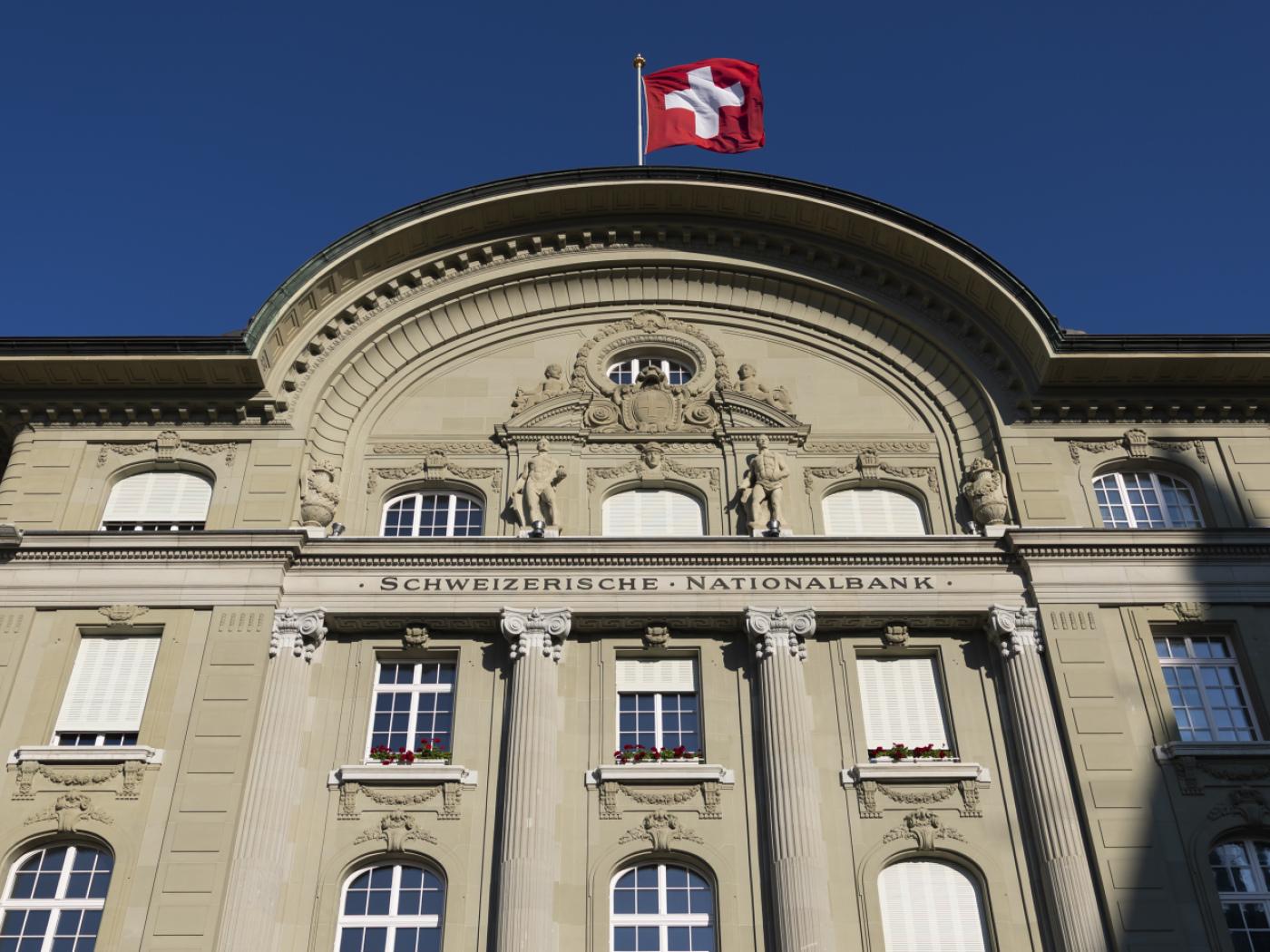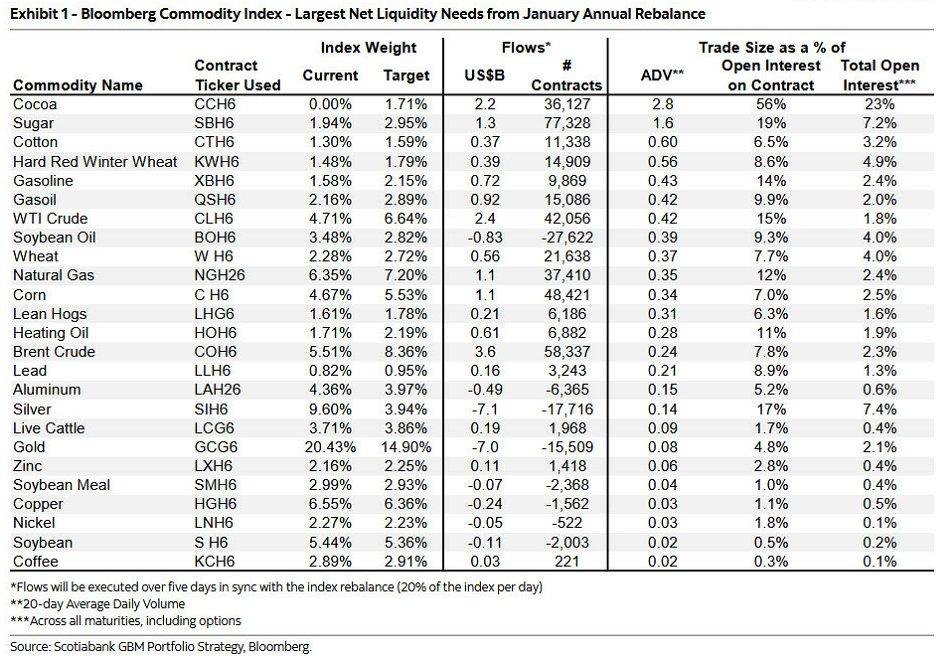Overview: The dollar is mostly softer today, ahead of tomorrow's employment report. The ECB meeting and President Lagarde's press conference are main events today. There is little doubt that it will cut rates today and do so ahead of the Federal Reserve for the first time. The ECB's forward guidance may be the key to the market's reaction. That said, the euro is in the upper end of its recent range, near $1.09. The Mexican peso, which was crushed at the start of the week following the election results, held April's flash crash low and is trading at a three-day high, with the dollar near MXN17.45. Nearly all the emerging market currencies are also a little firmer today, with the Polish zloty and Hungarian forint's small losses the exception.
After falling around 36 bp in the past five sessions, the 10-year US Treasury yield has stabilized. The two-year yield has dropped almost 30 bp to nearly 4.70%, the bottom seen twice in May. We think it is a bit exaggerated and may be a key to the dollar's recent weakness. Both are slightly firmer today. European bond yields are 1-2 bp firmer. The new S&P and NASDAQ records helped lift Asia Pacific equities today, especially Taiwan and South Korea. Chinese equities were unable to join the advance. Europe's Stoxx 600 is up about 0.7% today to a new record high and has rallied in four of the past five sessions coming into today. US index futures are narrowly mixed. Gold rose to a two-week high near $2374 on the back of the softer dollar and lower rates, but the momentum stalled, and the yellow metal is trading near $2360 late in the European morning. July WTI set a four month-low on Tuesday slightly below $72.50 and stabilized yesterday. It recovered to about $75 today where news selling emerged. OPEC+ recent decision to boost supply in Q4 weighs on sentiment as inventories build and questions over demand linger.
Asia Pacific
China will report its politically sensitive trade figures in next couple of days. The average shortfall in the first four months of the year was about $63.9 bln, slightly less than the average in the first four months of 2023 (~$66.5 bln). Last year, the average monthly surplus was $68.5 bln compared with $69.8 bln in 2022. In yuan terms, a slightly different picture emerges. The average surplus this year has been about CNY454.5 bln about CNY3 bln less than the average in the first four months of 2023. In yuan terms, the trade surplus was slightly larger last year than 2023 (average of nearly CNY482 bln from CNY466 bln in 2023. The PBOC is expected to report May reserves figures in the coming days. Given that other reserve currencies appreciated against the dollar last month, the thinking is that reserves likely grew in dollar terms, even if there was no formal intervention. While the PBOC continues to accumulate gold, the official gold holdings appear to be something on the magnitude of a sixth of its Treasury holdings. Australia reported its April trade balance, and it was not sufficient to negate weakening trend. The A$6.5 bln surplus was larger than expected, as imports fell faster than exports. It has reported a A$28 bln surplus in the first four months of this year compared with A$48 bln in January-April 2023. Lastly, the Japan's weekly portfolio data lent credence to our argument that rising Japanese rates does not yet mean weaker Japanese demand for foreign bonds. In the past four weeks, they bought JPY2.8 trillion (~$18 bln) of foreign bonds. That is the most since last September, which was driven by a one-week surge of JPY3.6 trillion. Outside of that, Japanese investors bought the most foreign bonds over the past four weeks since last June.
The dollar recorded its high against the yen yesterday near JPY156.50, though, according to Bloomberg, about 1/100 of a yen below Tuesday high. It took place roughly at the same time that the US 10-year yield traded higher after the stronger than expected ISM report. As US yields pulled back, the dollar stalled, but did not trade below JPY156. The dollar is consolidating so far today in a JPY155.35-JPY156.35 range. The near-term outlook depends on the reaction to the US jobs data tomorrow. We suspect the more than 35 bp drop in the US 10-year yield is a bit excessive, and barring a poor employment report, a recovery in US rates could help lift the greenback toward JPY157.00-20. The Australian dollar remains stuck between $0.6600 and $0.6700. Its little changed near the middle of the range, having been up to $0.6685 earlier today. The Aussie has not closed outside of that range for a month. Benchmark three-month implied volatility is near 8.5%. It has rarely been lower since the pandemic. The year's high set in January was slightly above 10%. The PBOC set the dollar's reference rate at CNY7.1108 (CNY7.1097 yesterday). The average in Bloomberg's survey was CNY7.2434 (CNY7.2421 yesterday). There appears to be increased speculation that recent uninspiring data could prompt the to cut the one-year Medium-Term Lending Facility rate (2.5%) and boost the among available on June 16. We are not convinced yet, but much data will be reported before then and now. Meanwhile, the US 10-year premium over China has narrowed from a multiyear high of nearly 245 bp in late April to less than 200 bp yesterday, the least since the end of March.
Europe
Today's ECB meeting is historic. In its relatively brief history, it has never cut rates ahead of the Federal Reserve. Today it will. Still, we suspect officials will try to deliver a hawkish cut, by which we mean, framing the move to avoid the market driving down interest rates. ECB President Lagarde may be explicit that the reduction of restraint will be gradual, and policy needs to remain restrictive for some time as official confidence that inflation is indeed on a sustainable path back to target. With the economy recovering from the H2 23 contraction, unemployment at record lows (in aggregate), and a Fed cut still several months off, ECB officials need not be in a hurry. The updated economic forecasts may lift this year's growth and lower inflation projections made in March (0.6% and 2.3% respectively). These revisions may be technical in nature; little change to the 2025 and 2026 forecasts would also send a signal about the need for patience and gradualism. Note that the European Parliament election begins today and extends to June 9. This will produce a new European Commission, though von der Leyen seems to be the favorite for another term on a center-right (EPP) majority. However, a final decision is not expected until the European Council (heads of state) on June 27-28.
The euro recorded session highs in early North American activity yesterday, slightly above $1.0890. It was sold in response to the stronger US ISM and fell to about $1.0855. Ahead of the ECB meeting, it is in a quarter-cent range below $1.0895. The low for the week was set on Monday slightly below $1.0830, and the 20-day moving average is near $1.0840. It has been up to about $1.0915 earlier this week. The next area of resistance is seen around $1.0935-50. Sterling fared a bit better, trading in about a 20-tick range around $1.2775 yesterday. Today, it is trading between about $1.2775 and $1.2810. The economic diary is light until next Tuesday's employment report and April's GDP (and details) the following day (a few hours ahead of the FOMC decision). That said, tomorrow's US jobs data tends to be impactful. Sterling remains the only G10 currency that has gained against the dollar this year (~0.35%).
America
Today's US data pale in comparison to tomorrow's employment report in terms of market impact. Q1 productivity and unit labor costs are derived from Q1 GDP. The recent downward revision to Q1 growth warns that the 0.3% gain in productivity may be revised away and unit labor costs tweaked higher. The US trade balance is also not capturing the imagination of market participants. Despite the growth differentials and overvalued dollar on nearly any metric, the US trade deficit narrowed last year. The Q1 24 shortfall averaged $68.8 bln, while in Q1 23, it averaged $66.7 bln. These are nominal number, and for GDP purposes, it is the real (inflation adjusted) balance that matters. In a larger picture, May's survey data, barring the ISM manufacturing, is better than April. May auto sales (15.9 mln saar) were the strongest since last April. The Atlanta Fed's GDP tracker has little May data to work with so far, but that will change with tomorrow's employment report. Canada also reports April (merchandise) trade balance. Canada's March shortfall was the largest in nine months at nearly C$2.3 bln. It had reported small surpluses in January and February, but the average in Q1 24 was -C$466 mln, compared with an average surplus of nearly C$500 mln in Q1 23. The Bank of Canada delivered the widely expected 25 bp cut yesterday and signaled more will be forthcoming as inflation moderates. The May CPI is due June 25. After the meeting and press conference, the market feels more confident that there will be another two cuts in H2 24. Meanwhile, the political anxiety is still running high for investors after the stunningly large victory of the Morena party and allies in Mexico. Today's data, auto production and exports, may not move the market ahead of the tomorrow's CPI. Yet, we note that Mexico is exporting around 80% of the autos it builds. Its excess capacity is acceptable to Americans as their companies are largely responsible. In proportionate terms, China exports a fraction. Foreign brands, using China as an export platform, appear to be responsible for the lion's share of China's auto exports.
The US dollar ran up to CAD1.3740 following the Bank of Canada rate cut. The greenback has not settled above CAD1.3750 since the end of April. The gains were pared, and the US dollar slipped below CAD1.3700. It has not been above there today but has also found support near CAD1.3665. The near-term fate of the Canadian dollar may depend more on the jobs data tomorrow and whether the Dollar Index can move convincingly through 104.50. The Mexican peso rose yesterday for the first time since the weekend election. The dollar peaked on Tuesday a little above MXN18.19, which we note is slightly below the high from April's flash crash (~MXN18.2135). It set a three-day low earlier today near MXN17.4465. The MXN17.40 area is the (61.8%) retracement of the post-election dollar rally. Given the 11% overnight interest rates in Mexico, it is expensive to be short without the peso falling. The Bolsa also rose yesterday. In the past two sessions, it has gained a bit more than 5% after losing slightly more than 6% on Monday. Mexico's 10-year dollar bond yield has fallen for the past five sessions, as has the 10-year US Treasury yield. However, while the US yield has fallen 32 bp, Mexico's has fallen almost 20 bp.
Full story here Are you the author? Previous post See more for Next post
Tags: #USD,Bank of Canada,China,Currency Movement,Featured,Mexico,newsletter






























